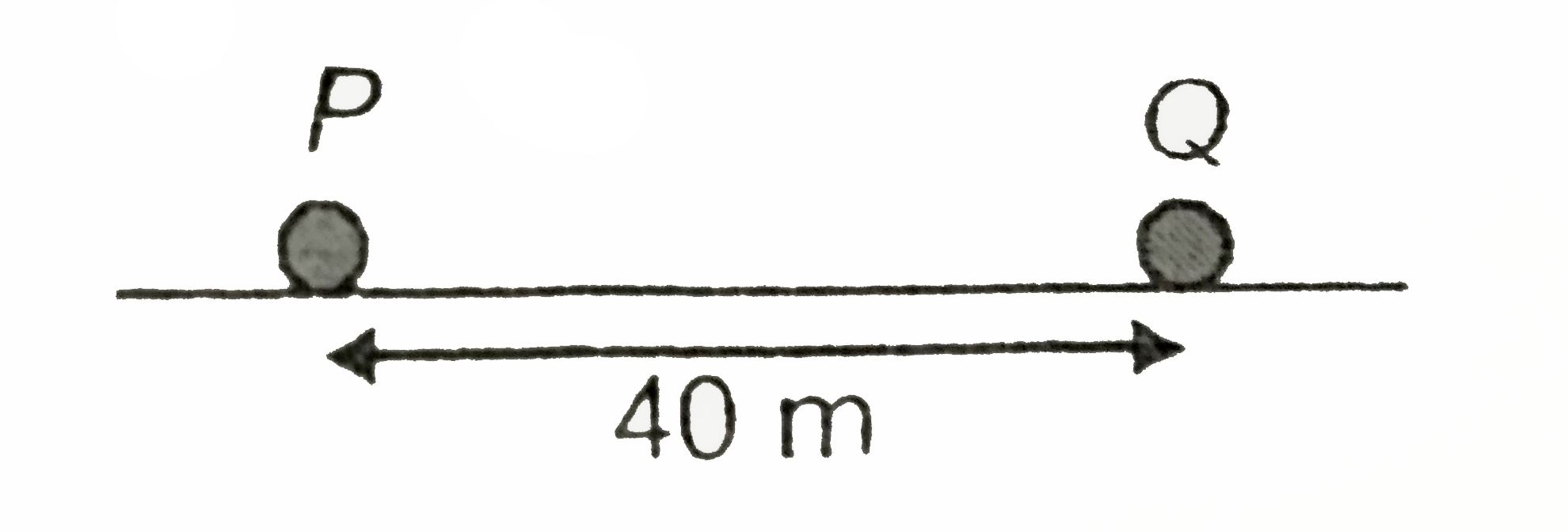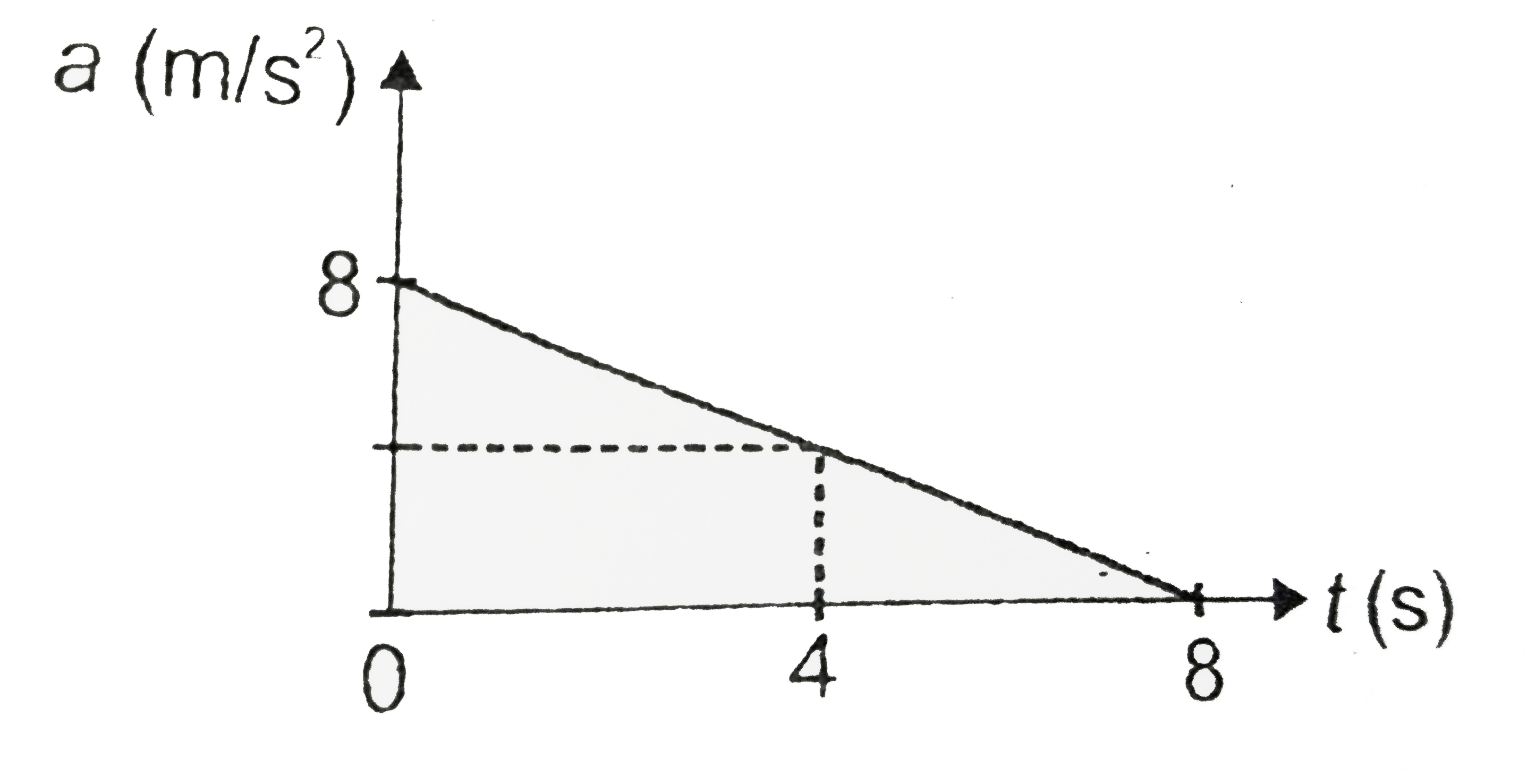Two particles are moving along x-axis. Particle-1 is 40m behind Particle-2. Particle-1 starts with velocity12m/s and acceleration 4m/s2 both in positive x-direction. Particle-2 starts with velocity 4m/s and acceleration 12m/s2 also in positive x-direction. Find
(a) the time when distance between them is minimum.
(b) the minimum distacne between them.
1s 36m
12s 36m
1s 360m
1s 136m
The correct Answer is:A
To solve the problem step by step, we will analyze the motion of both particles and determine the time when the distance between them is minimum, as well as the minimum distance itself.
Given Data:
- Particle 1:
- Initial position: x1(0)=−40m (40 m behind Particle 2)
- Initial velocity: u1=12m/s
- Acceleration: a1=4m/s2
- Particle 2:
- Initial position: x2(0)=0m
- Initial velocity: u2=4m/s
- Acceleration: a2=12m/s2
Step 1: Determine the velocities of both particles as functions of time
The velocity of each particle at time t can be expressed as:
- For Particle 1:
v1(t)=u1+a1t=12+4t
- For Particle 2:
v2(t)=u2+a2t=4+12t
Step 2: Set the velocities equal to find the time when they are the same
To find the time when the distance between them is minimum, we set v1(t)=v2(t):
12+4t=4+12t
Rearranging gives:
12−4=12t−4t
8=8t
t=1s
Step 3: Calculate the positions of both particles at t=1s
Using the equation of motion s=ut+12at2:
- For Particle 1:
s1=u1t+12a1t2=12(1)+12(4)(12)=12+2=14m
Therefore, the position of Particle 1 at t=1s:
x1(1)=−40+14=−26m
- For Particle 2:
s2=u2t+12a2t2=4(1)+12(12)(12)=4+6=10m
Therefore, the position of Particle 2 at t=1s:
x2(1)=0+10=10m
Step 4: Calculate the minimum distance between the two particles
The distance between the two particles at t=1s is:
Distance=x2(1)−x1(1)=10−(−26)=10+26=36m
However, we need to consider the initial distance of 40 m:
Minimum Distance=Initial Distance−Distance=40−4=36m
Final Answers:
(a) The time when the distance between them is minimum: 1 second
(b) The minimum distance between them: 36 meters
- Particle 1:
- Initial position: x1(0)=−40m (40 m behind Particle 2)
- Initial velocity: u1=12m/s
- Acceleration: a1=4m/s2
- Initial position: x2(0)=0m
- Initial velocity: u2=4m/s
- Acceleration: a2=12m/s2
The velocity of each particle at time t can be expressed as:
- For Particle 1:
v1(t)=u1+a1t=12+4t
- For Particle 2:
v2(t)=u2+a2t=4+12t
To find the time when the distance between them is minimum, we set v1(t)=v2(t):
12+4t=4+12t
Rearranging gives:
12−4=12t−4t
8=8t
t=1s
Using the equation of motion s=ut+12at2:
- For Particle 1:
s1=u1t+12a1t2=12(1)+12(4)(12)=12+2=14m
Therefore, the position of Particle 1 at t=1s:
x1(1)=−40+14=−26m
s2=u2t+12a2t2=4(1)+12(12)(12)=4+6=10m
Therefore, the position of Particle 2 at t=1s:
x2(1)=0+10=10m
The distance between the two particles at t=1s is:
Distance=x2(1)−x1(1)=10−(−26)=10+26=36m
However, we need to consider the initial distance of 40 m:
Minimum Distance=Initial Distance−Distance=40−4=36m
(a) The time when the distance between them is minimum: 1 second
(b) The minimum distance between them: 36 meters
Topper's Solved these Questions
- BOOK - DC PANDEYCHAPTER - KINEMATICSEXERCISE - Example Type 31videos
KINEMATICS
- BOOK - DC PANDEYCHAPTER - KINEMATICSEXERCISE - Example Type 41videos
KINEMATICS
- BOOK - DC PANDEYCHAPTER - KINEMATICSEXERCISE - Example Type 11videos
KINEMATICS
- BOOK - DC PANDEYCHAPTER - GRAVITATIONEXERCISE - (C) Chapter Exercises45videos
GRAVITATION
- BOOK - DC PANDEYCHAPTER - KINEMATICS 1EXERCISE - INTEGER_TYPE15videos
KINEMATICS 1
Similar Questions
Two particles are moving along x-axis. Particle-1 starts from x=−10m with velocity 4m/s along negative x-direction and acceleration 2m/s2 along positive x-direction. Particle-2 starts from x=+2m with velocity 6m/s along positive x-direction and acceleration 2m/s2 along negative x-direction.
(a) Find the time when they collide.
(b) Find the x-coordinates where they collide. Both start simultaneously.View SolutionA particle is moving with initial velocity 1m/s and acceleration a=(4t+3)ms2. Find velocity of particle at t=2sec.
View Solution
Knowledge Check
- Question 1 - Select One
A particle moving with a velocity equal to 0.4m/s is subjected to an acceleration of 0.15m/s2 for 2s. in a direction at the right angle to its direction of motion. The resultant velocity is
A0.7m/sB0.5m/sC0.1m/sDBetween 0.7 and 0.1m/s
A particle starts with a velocity of 2m/s and moves in a straight line with a retardation of 0.1m/s2. The time that it takes to describe 15m is
View SolutionA particle experience an acceleration a=(4e−3t),m/s2 along positive x-axis,where t is time in s.If the initial velocity of the particle is 2m/s along positive x -axis,the velocity of the particle when its acceleration becomes zero is ?
View SolutionA particle experience an acceleration a=(4e−3t)ms2 along positive x-axis, where t is time in s .If the initial velocity of the particle is 2m/s along positive x-axis,the velocity of the particle when its acceleration becomes zero is?
View SolutionTo particles P and Q are initially 40 m apart P behind Q. Particle P starts moving with a uniform velocity 10 m/s towards Q. Particle Q starting from rest has an acceleration 2m/s2 in the direction of velocity of P. Then the minimum distance between P and Q will be
 View Solution
View SolutionA particle starts from rest and moves with an acceleration of a={2+|t−2|}m/s2 The velocity of the particle at t=4 sec is
View SolutionThe acceleration-time graph of a particle moving along x-axis is shown in the figure. If the particle starts with velocity 3 m/s at t = 0, find the velocity of particle at t = 4 s.
 View Solution
View SolutionA particle is moving along positive x direction and experiences a constant acceleration of 4m/s2 in negative x direction. At time t=3 second its velocity was observed to be 10m/s in positive x direction.
(a) Find the distance travelled by the particle in the interval t=0 to t=3s. Also find distance travelled in the interval t=0 to t=7.5s..
(b) Plot the displacement – time graph for the interval t=0 to 7.5s.View Solution

